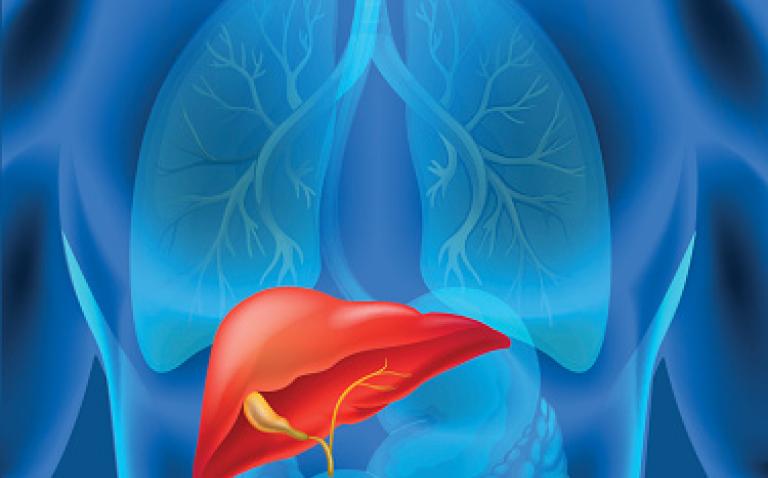BTG plc, a global specialist healthcare company, and Royal Philips, announced a significant milestone in their collaboration with the treatment of the first liver cancer patient with LC Bead LUMI™ in conjunction with Philips Live Image Guidance, targeting a hypervascular tumour with the goal to block blood flow to achieve tumour necrosis.
Liver cancer is the second leading cause of cancer deaths in the world,1 and one of the most challenging to treat. Each year, more than 700,000 patients worldwide are diagnosed with liver cancer.2 Interventional embolisation is an option for some patients with tumours that cannot be removed by surgery.
The first patient treated signals the next stage in commercialising next generation embolic beads, which can be visualised during interventional procedures, allowing enhanced visualisation to evaluate completeness of tumour treatment. As a result of the collaboration between BTG and Philips, for the first time doctors will be able to see rather than assume the location of the LC Bead LUMI™, in order to deliver their treatment with more confidence when treating liver cancer.
“The aim with this new radiopaque embolic bead and visualisation technology is to provide clinicians like me the ability to make real-time adjustments while conducting the embolisation procedure, so that we can optimise patient’s treatment and hopefully improve targeting accuracy,” said Bradford Wood, MD, Director of the NIH Center for Interventional Oncology* and Chief of Interventional Radiology. “It is reassuring for the clinician and the patient to know that the treatment was delivered exactly where it was aimed, and where it was needed. Treating the first patient using LC Bead LUMI™ in combination with dedicated Philips 2D X-ray and 3D CBCT image guidance is a milestone in our public-private partnership with both of our industry research partners. The imaging of the beads during this first procedure was exquisite and provided valuable information.”
By enabling visualisation of beads during an embolisation procedure, LC Bead LUMI™ will help embolisation technology achieve its full potential. LC Bead LUMI™ has been developed with revolutionary radiopacity technology in collaboration with Philips that enables real-time visualisation of bead location during embolisation. LC Bead LUMI™, supported by Philips Live Image Guidance, has the potential to offer interventional radiologists more control, allowing enhanced visualisation to evaluate the completeness of tumour treatment and end-point determination.
“BTG continues to advance its leadership in Interventional Medicine by actively listening to our customers and providing creative solutions to meet their clinical needs,” said Peter Pattison, Interventional Oncology General Manager, BTG. “Several years ago, we began scientific collaboration with Philips to evaluate the benefits of better image-guided therapy and this venture resulted in the ability to calibrate Philips’ imaging software to LC Bead LUMI™. The clinical impact of the BTG/Philips collaboration is now helping interventional radiologists and multidisciplinary teams make enhanced treatment decisions for patients with liver cancer.”
Ronald Tabaksblat, Business Leader, Imaging Guided Therapy Systems, Philips commented, “Minimally-invasive therapy procedures provide key benefits for healthcare systems and patients, and intelligent image guidance is an essential part of these procedures. We aim to continuously improve Image Guided Therapy and our collaboration with BTG to provide enhanced visibility and guidance during interventional embolization procedures is another important milestone in this exciting journey to help deliver excellent treatment and enhanced patient care.”
LC Bead LUMI™ was cleared for clinical use in the US in December 2015 after extensive laboratory testing based on the clinical foundation of its predicate device, LC Bead®.
BTG and Philips will showcase their advancements in interventional oncology at the upcoming symposium on Clinical Interventional Oncology (CIO), taking place February 6–7 in Hollywood, FL. For information on BTG, visit www.btg-im.com, and to learn more about Philips integrated solutions for diagnostics and therapeutic oncology, please visit www.philips.com/io.
*NIH does not endorse or recommend any commercial products, processes, or services. The views and opinions of authors expressed here do not necessarily state or reflect those of the US Government or the NIH, and they may not be used for advertising or product endorsement purposes.
References:
- World Health Organization (WHO). Cancer factsheet. Available at: http://www.who.int/mediacentre/factsheets/fs297/en/. Last accessed January 25, 2016.
- American Cancer Society. What are the key statistics about liver cancer?. Available at: http://www.cancer.org/cancer/livercancer/detailedguide/liver-cancer-what-is-key-statistics. Last accessed January 25, 2016.










